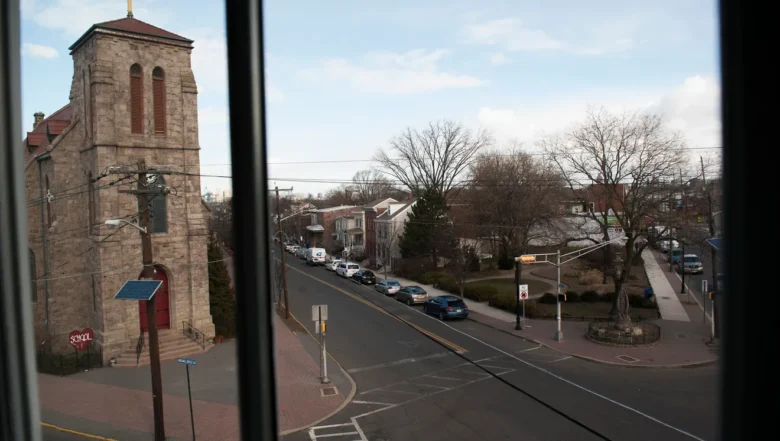Neighborhood plans in Camden could determine the city’s future
Phaedra Trethan Cherry Hill Courier-Post
Several city neighborhoods have new visions for their individual futures. What are they and how will they shape the entire city’s fortunes?
CAMDEN — Camden is a city of neighborhoods, each with its own personality, its own challenges, its own strengths.
Several of those neighborhoods, though, are working together in a way they haven’t always in the past, formulating plans that will determine not only their individual futures, but also the future of the entire city.
“We’re all doing better by working together,” said Pilar Hogan-Closkey, executive director of St. Joseph’s Carpenter Society (SJCS), a nonprofit housing and community development corporation that operates primarily in East Camden and Cramer Hill.
The “we” she means include SJCS, Heart of Camden, Camden Lutheran Housing and Camden Community Partnership, all of which have been engaging with residents in their respective neighborhoods and collectively with city officials to formulate neighborhood plans.
East Camden, Cramer Hill, Waterfront South and North Camden have all completed or are in the process of finalizing neighborhood plans. The timing isn’t coincidental, Hogan-Closkey said: Hoping to secure Neighborhood Revitalization Tax Credits (NRTC), Camden’s community development corporations know having an updated, well-conceived and complete neighborhood plan is crucial to showing it will be money well spent.
“We’re happy it’s all happening at once,” she said. “Each neighborhood has its own flavor, but there are also a lot of similarities. This allows us all to work together. It helps people envision how to put a plan together, to look at examples from other cities, see tangible examples and say, ‘someone tried this and it worked.’ We can say, this worked in Philadelphia or New York or wherever, so we’re not reinventing the wheel.”
“Neighborhood plans help ensure the community, state and city are all working together, and it helps ensure the support is there from the city and the state,” explained Heart of Camden executive director Carlos Morales.
“A lot of us were already working with the NRTC program and they said, it’s been five or 10 years or so and it’s time to update your neighborhood plans,” he continued, noting that Waterfront South’s last plan was in 2016.
The neighborhood nonprofits — and Camden Community Partnership coordinating with each of them and the city — worked with Dr. Ed Williams, Camden’s director of planning, so each neighborhood plan fits in with the city’s master plan, Morales noted. Once a plan is approved by neighbors, it’s submitted to the city, then the state. Once adopted, it becomes a part of Camden’s master plan.
So what’s in each plan? And how will they collectively shape the city’s future?
Waterfront South
In Waterfront South, the 2016 plan that emphasized venues — the Michael J. Doyle Fieldhouse, the Camden Shipyward and Maritime Museum, Camden FireWorks, Nick Virgilio Writers House and South Camden Theatre Company — has come to fruition, and Morales said, that’s important in itself.
“When we think about what we want and what is possible we are pragmatic,” he said. “We want people to be inspired, but they’re most inspired when they see action. If they don’t see results, they become disengaged.”
Government entities, corporate and private philanthropists and nonprofits “want to invest where their efforts will be supported.”
Waterfront South’s “beauty and its curse is that we’re isolated in some ways,” Morales explained. Bounded by Interstate 676, Atlantic Avenue and the Delaware River, the neighborhood sometimes feels like an entity all its own, with historic buildings and older homes, but also with heavy industry like EMR, the South Jersey Port Corporation, the Camden County Municipal Utilities Authority and a trash to steam plant.
Not all of those industries have always been good neighbors, and Waterfront South residents have fought for decades against pollution and environmental racism.
“The goal (of the latest neighborhood plan) is to strengthen and grow our core of homeowners,” Morales said.
Camden as a whole struggles with too many abandoned properties and too few viable, affordable housing options, he added, and Waterfront South is no different. Untangling ownership and tax liens, wrangling with absentee landlords, and helping people find suitable, safe and affordable places to live are among the challenges facing the city and housing nonprofits like Heart of Camden, Camden Lutheran Housing, St. Joseph Carpenter Society and others.
“We also want to build capacity at our existing organizations, support them as they grow, and position ourselves for further growth.”
Morales grew up in Waterfront South, in a home Heart of Camden helped his family acquire, and he’s been with the nonprofit for four years now. After a period of transition and even contraction, Heart of Camden is positioned for growth that Morales wants to ensure is sustainable.
Waterfront South’s plan, dubbed “Catch the Wave,” prioritizes residents’ empowerment; preserving and enhancing the neighborhood’s historic, cultural and artistic institutions; strengthening its business environment; and improving waterfront access, green spaces and other amenities. Ensuring a clean, safe and healthy physical environment, too, are also priorities.
To view Waterfront South’s Neighborhood Plan draft, visit: https://icatchthewave.com/
Read the remainder of the article here.


Comments are closed.